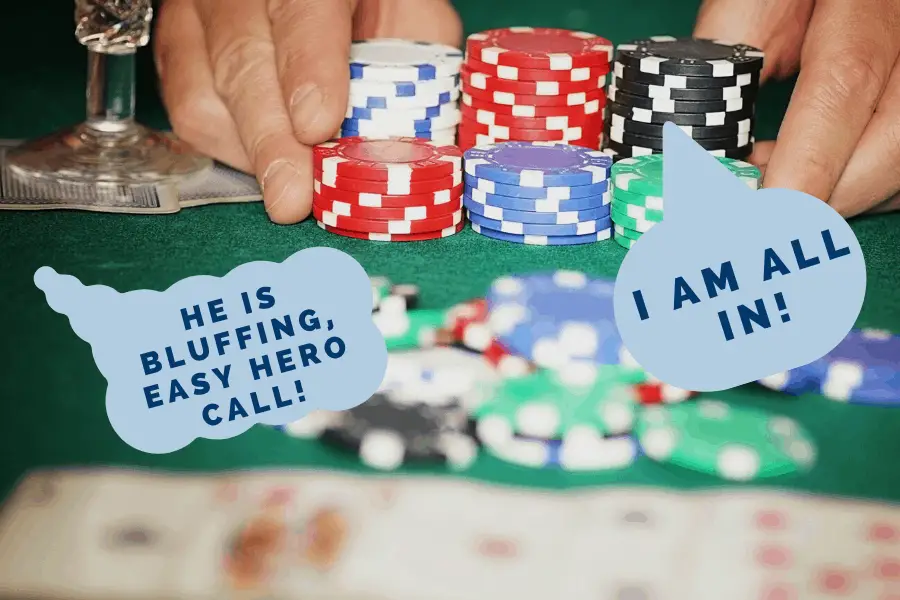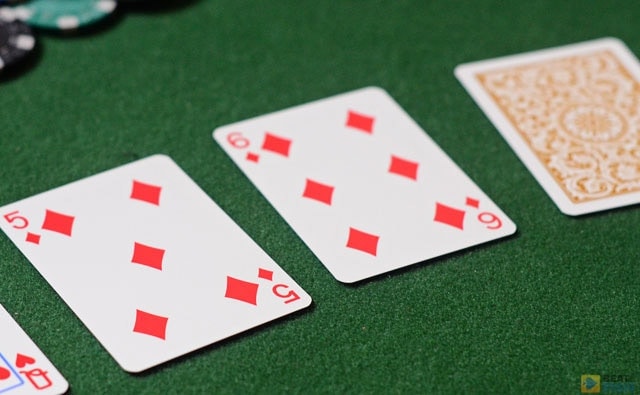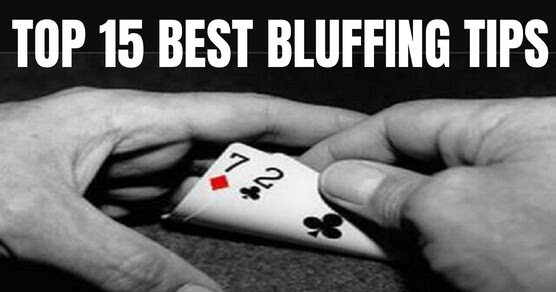Poker Bluff Tips
Winning at poker isn’t all about the fundamentals.
Poker players spend years trying to win a significant sum of money on the poker circuit. Maria Konnikova was a newbie who crushed the poker tables in less than a year. The New York Times best-selling author was carrying out research for her book “The Biggest Bluff” and was just an amateur in the poker world when she had her first taste of major poker success. “The Biggest Bluff is a great read if you play poker. But it's also a great read for those, like me, who don't play poker. But it's also a great read for those, like me, who don't play poker. For us, the game provides the backdrop for a fascinating look at human nature, at attention and focus, at game theory (applied much more broadly than.

There are a handful of special power moves that, when mastered, can make the difference between winning a little and winning a lot.
In this 10-part beginner poker strategy series we'll to show you exactly how to use these powerful poker moves to make more money.
Poker Bluff Tips Restaurants
Today we’re explaining the bluff catcher. We’ll show you how, against the right opponents, even marginal hands like ace-high and bottom pair can make you big money on the river.
What is a Bluff Catcher?
The What: The term ‘Bluff Catcher’ is exactly what it sounds like: A hand that, while not super powerful, is good enough to beat your opponent when he’s bluffing. It’s a hand that’s not strong enough to value bet, and not strong enough to beat your opponent’s value-betting range, but has showdown value against bluffs.
Poker Bluff Tips Game

The When: Generally when people talk about bluff catchers they’re referring to calling the final bet on the river.
The Where: Bluff catchers are most commonly found in bluffing games like No-Limit Hold’em and Pot-Limit Omaha but the concepts involved are useful in any poker game.
The Why: By exploiting players who bluff too much you can turn mediocre hands that you’d usually be folding into money-makers.
Bluff Catcher By Definition
The most important part of using this poker power move is understanding when you’re holding a bluff catcher hand, and whether the conditions are right to call that bet on the river.
Like so much in poker, the right decision depends entirely on what you know about your opponent.
You must understand his value-betting range, and his bluffing frequency. You must understand his behavior.
By definition a bluff catcher is a hand that’s behind your opponent’s entire value-betting range. So because you can only win against a bluff, it’s paramount to be able to spot players and situations where bluffing is common.
Quite simply, the bluff catcher will never work against someone who never bluffs.
To Catch a Bluff, There Must Be a Bluff
Poker Bluff Strategy
At a table of ABC/TAG players you might as well forget about bluff catchers and focus on getting value out of your big hands. But if you’re up against tricky, aggressive grinders you’ll be leaving a ton of money on the table by folding everything except the nuts.
Because good players understand that holdings are rarely bulletproof, they’re going to try to exploit you by firing missed draws, third barrels and straight-up bluffs on the river.
To use the bluff catcher effectively you have to identify players who are doing this too much, and exploit them by calling with the hands they’re trying to make you fold.
Against the right player, in the right situation, calling a river bet with ace-high will make you a fortune over your poker career. In short, you’re looking for overly aggressive players that bet and raise more than they should.
Related Reading:
The Math of the Bluff Catcher
The easiest way to think about the math behind a bluff catcher is to put it in terms of pot odds and equity.Usually when you’re calculating expected value you’re comparing pot odds and your probability of winning a hand by hitting a draw.
But since a bluff catcher can only win when your opponent is bluffing, you can substitute his bluffing frequency for the probability of hitting your draw to see whether you’re making a profitable call.
Let’s look at an example to make that point a bit more clear: It folds to the button in a $1/$2 No-Limit Hold’em cash game and he raises to $8. The small blind folds and you call with A♦3♦.
Pot = $17. The flop comes down 9♦8♠3♣ and you check-call a $10 bet.
Pot = $37. You both check the 2♥ on the turn, and the 2♣ hits the river. You check and the button bets $20.
Your hand only beats air so if he’s got a pair or better you’re sunk. Should you make the call?
To find out whether the call will be profitable in the long run you need to figure out the pot odds and compare that to your opponent’s bluffing frequency in this spot.
You have to call $20 to win $57 so the pot is laying you 2.85 to 1 on the call. If you believe your opponent’s river bet is a bluff 50 percent of the time you must call, since your odds against winning are 2 to 1, and the pot is offering you a better than 2 to 1 price.
Related Reading:
Put Your Opponent on a Range
While putting an exact number on bluffing frequency is impossible, you must do everything you can to understand your opponents’ tendencies and behaviors in common river-betting spots.
If you can identify the spots when they’re bluffing too much, you’re in the right position to pick them off with a weak hand you may otherwise have folded.
Poker Bluff Tips Golf
The most crucial skill to master in poker is the ability to put your opponent on a range and that includes knowing when he’s bluffing and when he’s value-betting.
Poker Bluff Tips 1x2
The more accurately you can estimate the probability that your opponent is bluffing, the more money you’ll be able to make by being there to catch him.

Related Reading:
More Essential Texas Hold'em Moves: